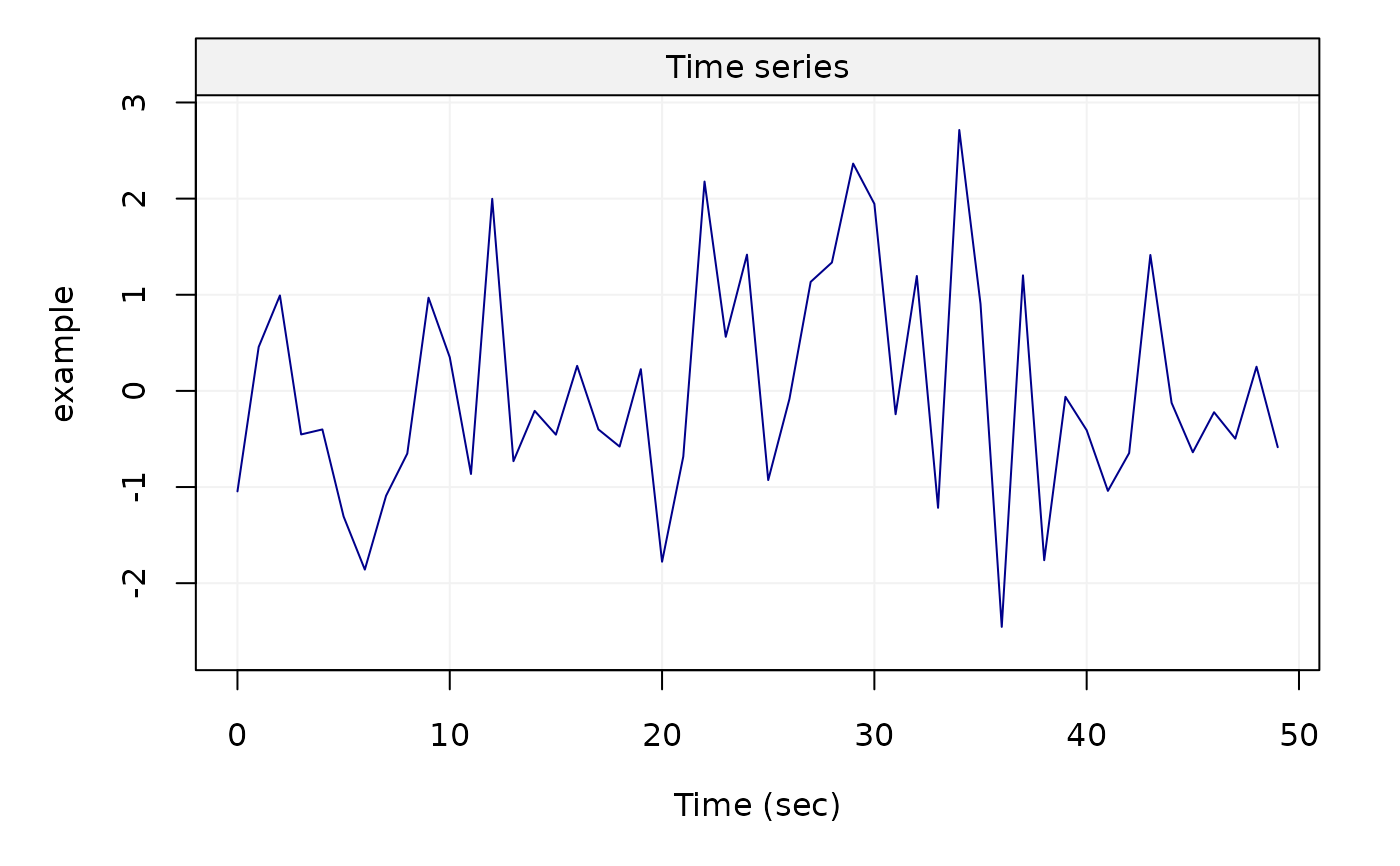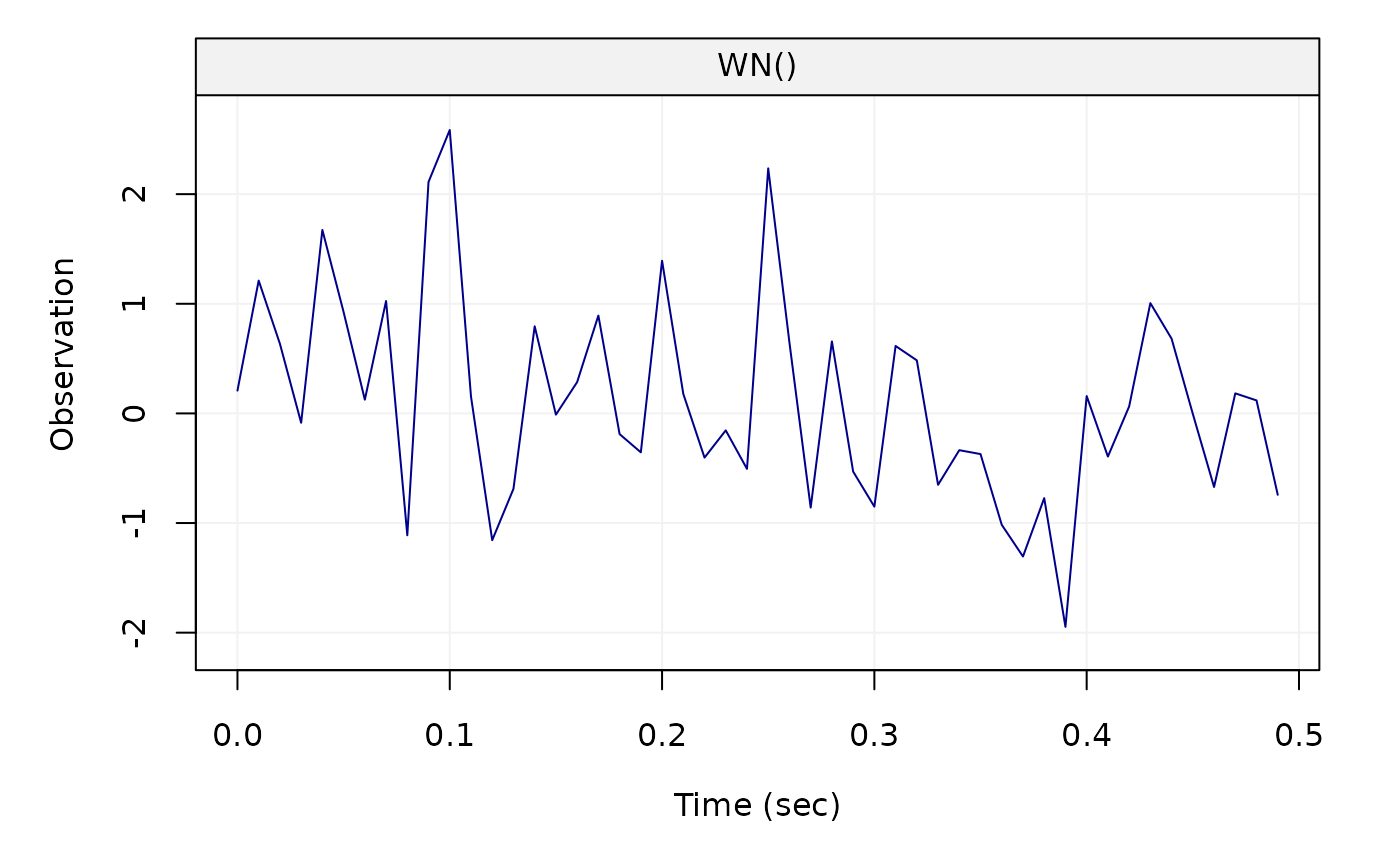Takes a time series and turns it into a time series oriented object that can be used for summary and graphing functions in the simts package.
gts(
data,
start = 0,
end = NULL,
freq = 1,
unit_ts = NULL,
unit_time = NULL,
name_ts = NULL,
name_time = NULL,
data_name = NULL,
Time = NULL,
time_format = NULL
)Arguments
- data
A one-column
matrix,data.frame, or a numericvector.- start
A
numericthat provides the time of the first observation.- end
A
numericthat provides the time of the last observation.- freq
A
numericthat provides the rate/frequency at which the time series is sampled. The default value is 1.- unit_ts
A
stringthat contains the unit of measure of the time series. The default value isNULL.- unit_time
A
stringthat contains the unit of measure of the time. The default value isNULL.- name_ts
A
stringthat provides an identifier for the time series data. Default value isNULL.- name_time
A
stringthat provides an identifier for the time. Default value isNULL.- data_name
A
stringthat contains the name of the time series data.- Time
A numeric or character
vectorcontaining the times of observations. Default value isNULL. Seexobject inas.Datefunction.- time_format
A
stringspecifiying the format of 'Time'. If not provided, 'Time' is assumed to be all integers. Default value isNULL. Seeformatargument inas.Datefunction.
Value
A gts object

